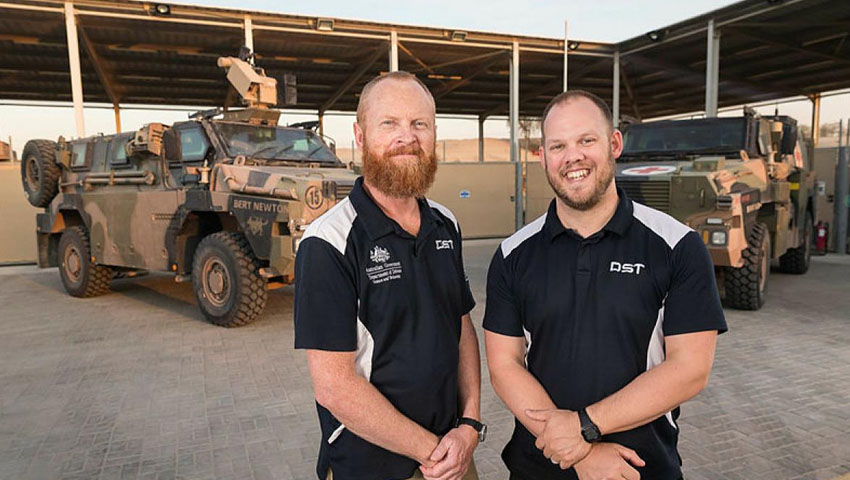The Australian Defence Force is backed with some of the most advanced technology in the world. But keeping it current is a challenge experts from the Defence Science and Technology Group (DSTG) are responsible for meeting.
To continue reading the rest of this article, please log in.
Create free account to get unlimited news articles and more!
Currently filling two of these roles are Matt Randell and Jeff Seers, who for the past six months have been undertaking specific research projects for the Commander of Joint Task Force 633, Rear Admiral Mark Hill.
RADM Hill explained the importance of Defence Science and Technology in supporting the delivery and enhanced delivery of capability for the ADF: "I can’t stress enough the importance of DSTG personnel in helping to improve the operational effectiveness of a wide range of essential equipment.
"From sand storms to snow and ice, Defence equipment has to function in just about every physical environment you could imagine. This puts enormous stress on operating capabilities, and when things fail, we need to get it back up and running as soon as possible."
Science and technology liaison officer Matt Randell, a radar systems engineer from DST Edinburgh in Adelaide, said having scientific personnel in the Middle East was essential to gain first-hand appreciation of the challenges facing ADF members.
"DSTG staff support the ADF wherever they are deployed, including Iraq and Afghanistan. Working in these environments is challenging, but often considered one of the highlights from our time away," Randell said.
The group recently undertook work on communications equipment used throughout the Middle East.
"Our research led to a number of changes to how the equipment was used and operated, which will greatly decrease the amount of time it now spends off-line," Randell said.
Seers, a materials scientist specialist from DST Fishermans Bend in Victoria, works as an operations analyst at the ADF’s main operating base in the Middle East.
As a former Navy sailor who has deployed on multiple operations with HMAS Manoora, Seers has an appreciation for the challenges of being away from home for extended periods.
"I had been keen to undertake this deployment for some time and it certainly lived up to my expectations," Seers said.
RADM Hill said the work by DSTG personnel has directly contributed to the success of ADF operations and he looks forward to their continuing support.

 Login
Login







